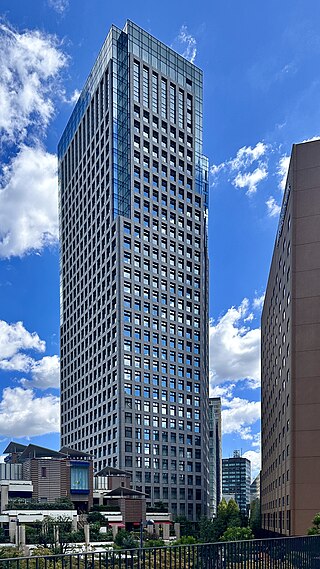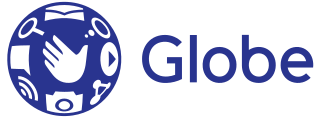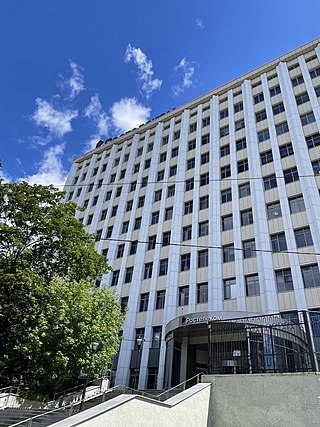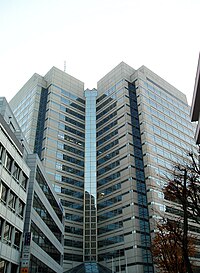
Telecommunications infrastructure in South Africa provides modern and efficient service to urban areas, including cellular and internet services. The Independent Communications Authority of South Africa (ICASA) is the watchdog of the telecommunications in the country.

T-Mobile is the brand name used by some of the mobile communications subsidiaries of the German telecommunications company Deutsche Telekom AG in the Czech Republic, Poland and the United States.

3G is the third generation of wireless mobile telecommunications technology. It is the upgrade over 2G, 2.5G, GPRS and 2.75G Enhanced Data Rates for GSM Evolution networks, offering faster data transfer, and better voice quality. This network was superseded by 4G, and later on by 5G. This network is based on a set of standards used for mobile devices and mobile telecommunications use services and networks that comply with the International Mobile Telecommunications-2000 (IMT-2000) specifications by the International Telecommunication Union. 3G finds application in wireless voice telephony, mobile Internet access, fixed wireless Internet access, video calls and mobile TV.

SoftBank Group Corp. is a Japanese multinational investment holding company headquartered in Minato, Tokyo which focuses on investment management. The group primarily invests in companies operating in technology that offer goods and services to customers in a multitude of markets and industries ranging from the internet to automation. With over $100 billion in capital at its onset, SoftBank's Vision Fund is the world's largest technology-focused venture capital fund. Fund investors included sovereign wealth funds from countries in the Middle East.

Bell Mobility Inc. is a Canadian wireless network operator and the division of Bell Canada which offers wireless services across Canada. It operates networks using LTE and HSPA+ on its mainstream networks. Bell Mobility is the third-largest wireless carrier in Canada, with 10.1 million subscribers as of Q3 2020.

Worldwide Interoperability for Microwave Access (WiMAX) is a family of wireless broadband communication standards based on the IEEE 802.16 set of standards, which provide physical layer (PHY) and media access control (MAC) options.

KDDI Corporation is a Japanese telecommunications operator. It was established in 2000 through the merger of DDI, KDD (ケイディディ), and IDO. In 2001, it merged with a subsidiary named Au, which was formed through the merger of seven automotive and mobile phone companies from the DDI-Cellular Group. As of 2020, it is the second-largest mobile telecommunications provider in Japan in terms of the number of contracts, following NTT Docomo.

A cellular network or mobile network is a telecommunications network where the link to and from end nodes is wireless and the network is distributed over land areas called cells, each served by at least one fixed-location transceiver. These base stations provide the cell with the network coverage which can be used for transmission of voice, data, and other types of content. A cell typically uses a different set of frequencies from neighboring cells, to avoid interference and provide guaranteed service quality within each cell.
Telkom SA SOC Limited is a South African wireline and wireless telecommunications provider, operating in more than 38 countries across the African continent. Telkom is majority state-owned (55.3%) with the South African government owning 40.5% of Telkom, while another 14.8% is owned by another state-owned company - the Public Investment Corporation (PIC), which is closely linked to the South African government.
Yahoo! Japan is a Japanese web portal. Its search engine was the most-visited website in Japan, nearing monopolistic status.

StarHub Limited, commonly known as StarHub, is a Singaporean multinational telecommunications conglomerate and one of the major telcos operating in the country. Founded in 1998, it is listed on the Singapore Exchange (SGX).

Globe Telecom, Inc., commonly shortened as Globe, is a major provider of telecommunications services in the Philippines. The company operates the largest mobile network in the Philippines and one of the largest fixed-line and broadband networks. As of November 2023, Globe has 54.7 million subscribers, making it the second largest network in terms of subscriber base.
The Personal Handy-phone System (PHS), also marketed as the Personal Communication Telephone (PCT) in Thailand, and the Personal Access System (PAS) and commercially branded as Xiaolingtong in Mainland China, was a mobile network system operating in the 1880–1930 MHz frequency band, used mainly in Japan, China, Taiwan, and some other Asian countries and regions.

au, or au by KDDI, is a Japanese mobile phone operator. au is a brand marketed by KDDI in the main islands of Japan and by Okinawa Cellular in Okinawa for their mobile cellular services. au is the second-largest wireless carrier in Japan, with 60.398 million subscribers as of March 2021.

A1 Telekom Austria (A1, A eins) is the leading fixed and mobile network operator in Austria, with 5.4 million mobile and 2.3 million fixed-line customers. A1 Telekom Austria traces its origins to Austria's first GSM mobile phone network which began testing in 1992 and commercial operations in 1994, under the name Mobilkom Austria, then part of the Austrian state-owned PTT agency Post- und Telegraphenverwaltung (PTV, ÖPT) until it was split off into its own company in 1996. After Mobilkom's merger with A1 Telekom Austria Group in July 2010 it operates under the new name of A1 Telekom Austria.

Rostelecom (Ростелеком) is Russia’s largest provider of digital services for a wide variety of consumers, households, private businesses, government and municipal authorities, and other telecom providers. Rostelecom interconnects all local public operators’ networks into a single national network for long-distance service. In other words, if one makes a long-distance call or originates Internet contact to or from Russia, it is likely that Rostelecom is providing part of the service. The company's stock trades primarily on the Moscow Exchange.

Total Access Communication Public Company Limited, commonly known as DTAC, is a GSM mobile phone company in Thailand. It is the nation's third largest GSM phone company, after AIS and True. DTAC is owned by Norwegian company Telenor both directly and indirectly, and both companies share the same logo. As of 31 December 2011, DTAC had 23.2 million subscribers with a market share of subscribers at around 30 percent. As of 2019, the company has 20.642 million mobile subscriptions and 3904 employees. It is listed on the Singapore Exchange and the Stock Exchange of Thailand.

T-Mobile US, Inc., often shortened as T-Mobile, is an American wireless network operator headquartered in Bellevue, Washington, U.S. Its largest shareholder is multinational telecommunications company Deutsche Telekom AG, a German company headquartered in Bonn, Germany. As of April 2023, the European company holds a 51.4% majority stake in the company. T-Mobile US is the third-largest wireless carrier in the United States, with 117.9 million subscribers as of December 31, 2023.

The Japanese mobile phone industry is one of the most advanced in the world. As of March, 2022 there were 199.99 million mobile contracts in Japan according to the Ministry of Internal Affairs and Communications. This is 158 percent of Japan's total population.

Airtel India commonly known as Airtel, is the second largest provider of mobile telephony and third largest provider of fixed telephony in India, and is also a provider of broadband and subscription television services. The brand is operated by several subsidiaries of Bharti Airtel, with Bharti Hexacom and Bharti Telemedia providing broadband fixed line services and Bharti Infratel providing telecom passive infrastructure service such as telecom equipment and telecom towers. Currently, Airtel provides 5G, 4G and 4G+ services all over India. Currently offered services include fixed-line broadband, and voice services depending upon the country of operation. Airtel had also rolled out its VoLTE technology across all Indian telecom circles.

























